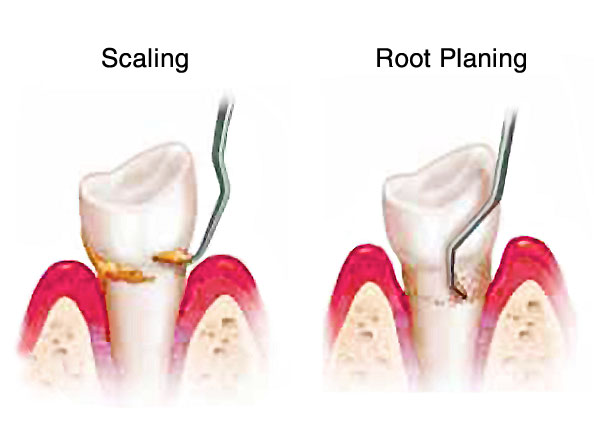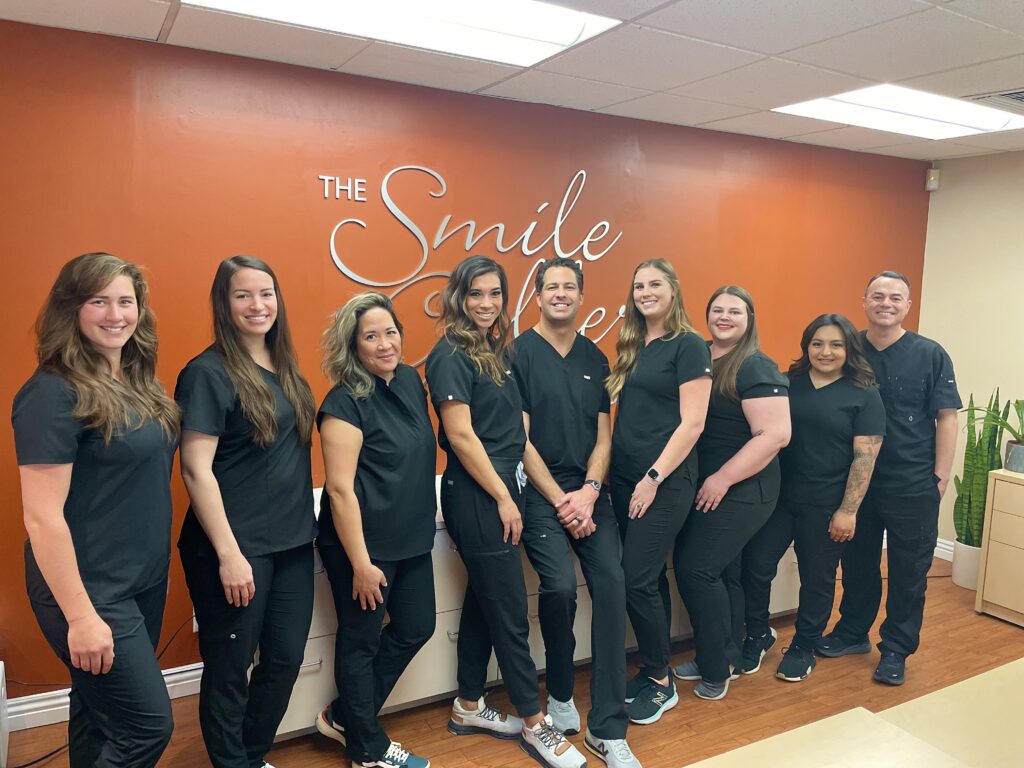Diagnosis of Gum Disease
Gingivitis is diagnosed when dental probing reveals periodontal pockets, or areas where the gums have receded from the teeth, of four millimeters or more in depth. In some instances, only part of the mouth is affected, but some patients see widespread effects. Gum disease is typically caused by insufficient flossing and brushing, delays between professional cleanings, and health conditions such as diabetes or pregnancy. Gum disease can be treated with scaling and root planing, otherwise referred to as a deep cleaning.
According to the Centers for Disease Control, almost 65 million American adults have or have had gingivitis. Gum disease is curable, treatable, and highly preventable through processes such as scaling and root planing by your local Escondido dentist. Dr. Bainer and the staff at the Smile Gallery can provide education on the symptoms of gum disease, as well as the treatments listed below.
The Smile Gallery Patient Reviews
Scaling and Root Planing: What Makes It Different From a Regular Cleaning
Scaling and root planing is different from regular dental cleanings. While a regular cleaning concentrates on the areas above the gum line and between the teeth, a deep cleaning is necessary to remove tartar, bacteria, and debris that collects under the patient’s gum line.


This bacterial buildup elicits the body’s natural immune response, which comes in the form of inflammation. If it goes untreated, the inflammation and infection will go deeper under the gums, resulting in bone loss, loose teeth, and eventual tooth loss.
The Procedure
Scaling and root planing may be performed on one quadrant or quarter of the mouth, or the entire mouth, depending on the patient’s diagnosis and the dentist’s recommendations. During the office visit, the hygienist or dentist will usually numb the areas to be treated. Next, the dentist will work under the patient’s gum line to remove debris, bacteria, and tartar. Finally, the dentist will plane the roots to eliminate potential footholds for future bacterial growth. The hygienist or dentist may also offer demonstrations and recommendations.
Reasons for Scaling and Root Planing
Periodontal disease is typically characterized by severe inflammation and gum damage due to the growth of bacteria. Infection forms under the gum line, where bacterial overgrowth has damaged connective tissues and caused the gums to shrink back from the teeth. As the patient’s gums recede, pockets develop, allowing tartar to form on the roots of the teeth where there’s no enamel to provide protection.
Most treatments are intended to eliminate bacteria via careful cleaning, prevent reinfection, and restore the patient’s gum tissues to a healthy state. Scaling removes tartar from the teeth, so the gums can grow healthy once more. Planing is the process by which the roots are smoothed, preventing further bacterial growth. The dentist and hygienist may use ultrasonic instruments to perform the procedure. Deep cleaning may require more than one visit, depending on the severity of the damage.
The Benefits of Dental Scaling and Root Planing Treatments
Successful scaling and root planing treatments stop the bone and gum deterioration commonly linked with periodontal disease. Furthermore, research shows that bacterial buildup from a periodontal infection may travel through the patient’s bloodstream and negatively affect other parts of the body, increasing the likelihood of respiratory and cardiovascular diseases. However, scaling and root planing eliminates the bacteria that create these conditions.
Another major benefit of this treatment is the prevention of tooth loss. When gingival pockets are more than 4mm deep, there’s an increased risk of periodontal disease. As the pockets grow deeper, bacteria have more room to grow, and the body’s natural inflammatory response eventually destroys bone and gum tissue. With prompt cleanings, these bacteria are eliminated before they cause severe damage.
Finally, deep dental cleanings may make patients’ mouths more attractive. Not only do scaling and root planing make the mouth more visually pleasing, they reduce halitosis (bad breath) caused by bacteria and leftover food particles in the mouth. Surface stains may be removed as well, adding another benefit to the procedure. For more information on the benefits of deep cleaning, call our Escondido office today or visit us online.
What Patients Should Know About the Scaling and Root Planing Process
The process of deep cleaning or scaling and root planing typically doesn’t cause pain or discomfort, but some patients experience soreness afterward, especially if the areas cleaned were deep. As the gums heal, the patient may experience sensitivity to extreme heat or cold. While the sensitivity will diminish with time, we recommend OTC pain relievers and external ice packs to minimize discomfort.
Some patients may encounter bleeding after a deep cleaning. As the gums heal, flossing and brushing should be done gently to avoid re-injuring tender or bruised gums. Dr. Bainer will show patients the best way to keep their teeth clean during the first few days after a deep cleaning treatment, and he may recommend a post-procedural rinse. If patients have questions, they can call the office to consult a member of the treatment team.
Recovery
The process of recovering from a deep cleaning is relatively simple. The dentist may prescribe antibiotics and recommend an OTC pain reliever to treat tenderness and discomfort. The patient will receive aftercare instructions on when to resume his or her normal oral care routine, including flossing and brushing.
Deep Cleaning is an Effective Treatment
Root planing and scaling may cause sensitivity to the gums and teeth, but it is an effective way to stop the advance of periodontal disease. This condition is the primary cause of bone and tooth loss, and deep cleaning may help patients preserve the gum tissues that hold their teeth in position. If a patient follows all post-procedural instructions and maintains good oral hygiene, the disease’s progression will stop, the gums will heal, and they will eventually regain their pink, healthy appearance. If a patient wants to learn more about deep cleaning or other oral treatments at the Smile Gallery, or they simply want to schedule a checkup, they can visit our office or call us today.

Our Promise to You
The Smile Gallery practices the Art of Fine Dentistry. We work to ensure our patients have the most relaxed and comfortable experience possible. Our individualized patient attention means you receive the best care possible. Our friendly staff is ready to greet you warmly, set you at ease, and create a level of comfort and customer service rarely seen in the dental industry.
We understand patients who have dental anxiety and have been working for years to provide the safe, comfortable environment that makes you want to see your Escondido dentist a few times a year or anytime your teeth need dental services.
